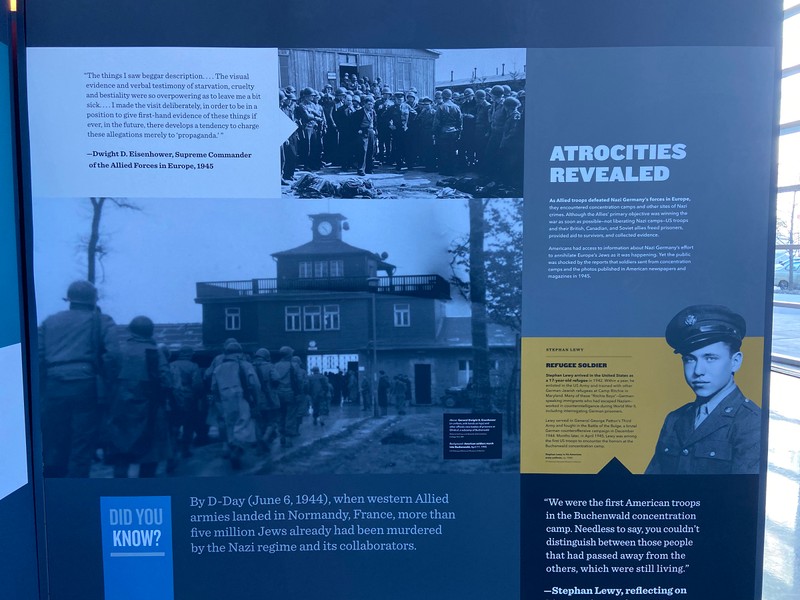Atrocities Revealed (Americans and the Holocaust)
Introduction
Author-Uploaded Audio
Atrocities Revealed (Americans and the Holocaust)
Text-to-speech Audio
We already talked a little bit about Americans seeing images of the liberation of concentration camps for the first time in the spring of 1945, just as World War II in Europe ended. Americans were horrified, and not just on the homefront. Battle-trained American soldiers were also shocked by what they saw. This is Stephan Lewy. He was one of hundreds of soldiers who came to the United States as Jewish refugees who later joined the American military. Lewy returned to Europe and participated in the liberation of the Buchenwald [pronounced Boo-kin-vahld] camp, which you can see here.
Read Lewy’s quote.
General Dwight Eisenhower, who later became the 35th president of the United States, toured the Ohrdruf [pronounced Or-druff] concentration camp in April 1945. He wrote back to Washington that he couldn’t even describe the horror that he had seen, and that he wanted people to see the evidence of the crimes so that someday people would not be able to claim this was propaganda.
Images

Backstory and Context
Text-to-speech Audio
Metropolitan Library System is one of 50 U.S. libraries selected to host AMERICANS AND THE HOLOCAUST, a traveling exhibition from the U.S. Holocaust Memorial Museum that examines the motives, pressures, and fears that shaped Americans’ responses to Nazism, war, and genocide in Europe during the 1930s and 1940s.
The Americans and the Holocaust exhibit will be on display at the Downtown Library, along with a series of related special events from Thursday, January 5 to Sunday, February 12.
Based on extensive new research of that period, Americans and the Holocaust addresses important themes in American history, exploring the many factors — including the Great Depression, isolationism, xenophobia, racism, and antisemitism — that influenced decisions made by the U.S. government, the news media, organizations and individuals as they responded to Nazism. This exhibition will challenge the commonly held assumptions that Americans knew little and did nothing about the Nazi persecution and murder of Jews as the Holocaust unfolded.
Drawing on a remarkable collection of primary sources from the 1930s and ’40s, the exhibition focuses on the stories of individuals and groups of Americans who took action in response to Nazism. It will challenge visitors to consider the responsibilities and obstacles faced by individuals — from Franklin Delano Roosevelt to ordinary Americans — who made difficult choices, sought to effect change, and, in a few cases, took significant risks to help victims of Nazism even as rescue never became a government priority.
Americans and the Holocaust was made possible by the generous support of lead sponsor Jeannie & Jonathan Lavine. Additional major funding was provided by the Bildners — Joan & Allen z”l, Elisa Spungen & Rob, Nancy & Jim; and Jane and Daniel Och. The Museum's exhibitions are also supported by the Lester Robbins and Sheila Johnson Robbins Traveling and Special Exhibitions Fund, established in 1990.
Sources
United States Holocaust Memorial Museum. Accessed January 5th, 2023. https://www.ushmm.org/.
American Library Association. Accessed January 5th, 2023. https://www.ala.org/.
